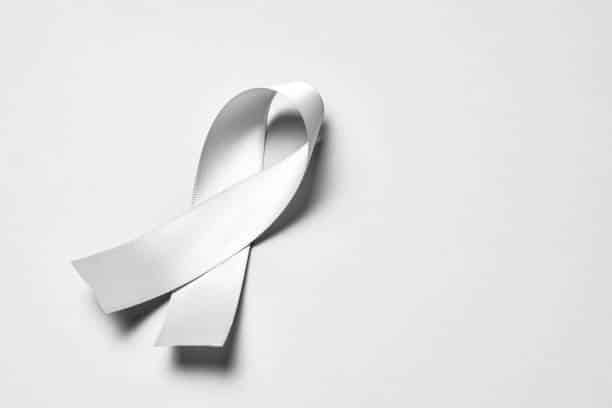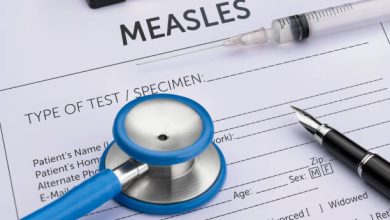I Was the Picture of Health—Until Radon Gave Me Lung Cancer – BlackDoctor.org


When Heidi was diagnosed with late-stage lung cancer in 2018, the news didn’t just shock her—it shattered everything she thought she knew about health.
A lifelong fitness trainer, health educator with a master’s degree, and wife of a primary care doctor, she lived what most would consider a model of clean living.
“We never had junk food in the house. We exercised. We did everything right,” she tells BlackDoctor. “So when I was told I had lung cancer, I couldn’t believe it.”
Even more startling: she had no symptoms. Her cancer was discovered incidentally during a CT scan for another issue.
“The only risk factor that I was aware of was [that] you needed a history of tobacco use to get lung cancer. And then the more I learned about it, the more embarrassed I felt as a health educator, and my husband too, that we didn’t know that anyone could get it,” Heidi adds.
That confusion soon turned to alarm when her son, an environmental engineer, asked her a simple question that changed everything: What’s the radon level in your house?
RELATED: 10 Things You Didn’t Know Were Ruining Your Indoor Air Quality
The Hidden Danger Beneath Her Home
Heidi and her husband tested their Colorado home—and discovered their radon levels were double what the EPA (Environmental Protection Agency) considers safe. Radon, a colorless and odorless gas that seeps up from the ground, is the second leading cause of lung cancer overall, and the leading cause among people who have never smoked.
Heidi had unknowingly spent decades breathing toxic air.
“I worried about my kids because their exposure was much more than mine was, and they can’t get screened because there’s lung cancer screening, but it’s only for people with heavy tobacco use histories,” she shares.
From Frustration to Action
After her diagnosis, Heidi tried to work with cancer centers to raise awareness about lung cancer and radon exposure. What she met instead was dismissal after asking if they would light up their building white in November for Lung Cancer Awareness Month.
“The response I got just made me snap. It was, ‘We have white lights that are on in the parking lot that get turned on every night, and doctors wear white coats,” she recalls.
So she took matters into her own hands.
“I went from a very shy, introverted person in that moment to who’s sitting here right now, just like, ‘How dare you…communicate with me like that,’” Heidi adds.
In a burst of emotion, Heidi asked her husband to make a large white wooden ribbon for their front door.
“Before we knew it, we were sending ribbons to all 50 states and then, with the help of industry, they helped us get these ribbons shipped to 36 different countries,” Heidi notes. “So we became an international movement just within a couple of months of putting that first ribbon on the door.”
That single ribbon—handmade and hung on her home—became the seed of The White Ribbon Project, a now international movement that brings visibility and dignity to lung cancer survivors and advocates for greater awareness of radon testing and lung cancer screening.
“It’s basically a public health campaign to educate, bring about awareness, [and] empower people to advocate for themselves with their doctors,” she shares. “I don’t want to hear as an excuse, ‘Well, lung cancer doesn’t get funding or the recognition or anything, because of a stigma.’ …AIDS really had a stigma, and they decided to humanize this disease.”
Building a Community, Breaking the Stigma
Lung cancer remains one of the most stigmatized diseases—often unfairly linked solely to smoking. Heidi and the White Ribbon Project are working to change that.
Heidi explains, “Anyone can get lung cancer… Why would you think that it’s not like any other cancer?”
The organization promotes inclusive language, education, and community-building events, from ribbon-making gatherings to team-building presentations with hospitals and biotech companies. Their mission: to change public perception, empower self-advocacy, and bring attention to underfunded lung cancer research.
RELATED: 5 Places Where Cancer May Be Hiding
Radon: The Invisible Threat
Heidi’s story also underscores an urgent public health issue—radon awareness.
Testing for radon is simple and affordable—often free through state health departments. In Colorado, where Heidi lives, for example, residents can order free radon test kits. If levels are high, mitigation systems (usually under $2,000) can easily reduce exposure.
“I think the biggest barrier is that the information isn’t out there,” Heidi says, adding that most people don’t think radon is their problem, or that it only affects old homes. But new, energy-efficient homes can actually trap radon more easily, she explains.
She encourages homeowners to test their mitigation systems annually and treat them like any other home appliance—subject to maintenance and repair.
Just because you mitigated once doesn’t mean you’re done forever. Things can change.
What’s Next for the White Ribbon Project
Today, the White Ribbon Project continues to expand globally, with educational partnerships, public awareness campaigns, and even appearances at international conferences. The group’s distinctive handmade ribbons have become symbols of solidarity, strength, and truth-telling.
Through her advocacy, Heidi has turned personal tragedy into a powerful purpose.
“I may not have chosen this journey,” she says, “but I’m using it to make sure others don’t face the same shock I did. Test your home. Know your risks. And never be ashamed to speak up.”
Learn More and Get Involved
The White Ribbon Project has established itself as a vital voice in the lung cancer community. You can connect with them to learn more, access resources, and join the movement.




